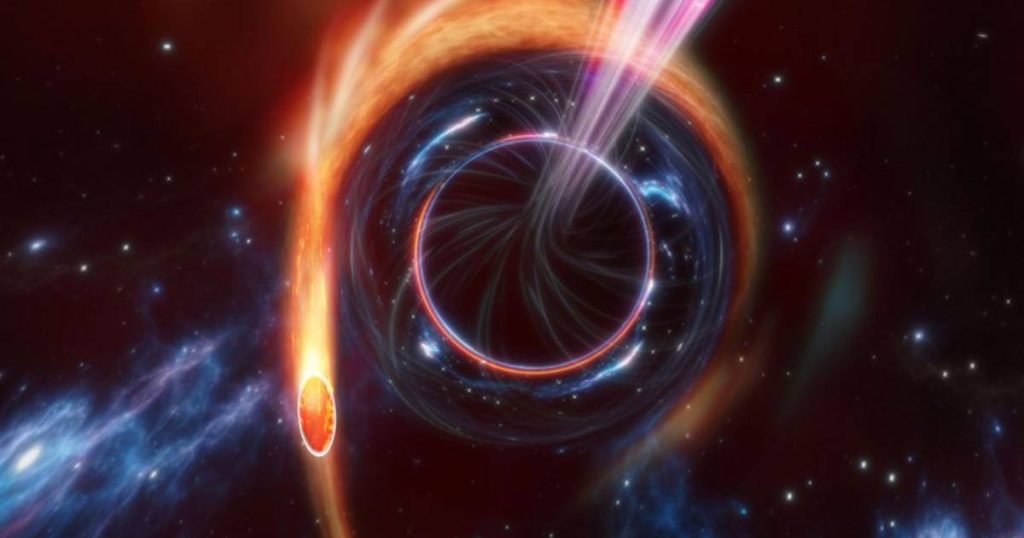It is rare for astronomers to see a supermassive black hole devouring a star. In February, it was found that this amazing cosmic phenomenon occurred 8.5 billion light years from our planet. The intensity of the beam of light accompanying that meal was no less than 1,000 trillion suns.
On February 11, the telescope at the Zwicky Transit Facility in California detected an unusually bright flash in the sky. Dubbed AT 2022cmc, the flash of light was different from what astronomers usually see. The light appeared more powerful than 1,000 trillion suns combined and came from 8.5 billion light-years away. Numbers that really make you dizzy and are incomprehensible to our brains.
still try. A light year is the distance that light travels in a year. If you know that light travels at over a billion kilometers per hour, then you also know that 8.5 billion light-years are very far from Earth, more than half the distance across the universe. And that thousand trillion, so again “1” with fifteen zeros. So a lot of sun.
Astronomers from around the world were dazzled and about 20 more telescopes were deployed. Research into this startling discovery has led to two simultaneous articles appearing this week in the journals Nature and Nature Astronomy. Their conclusion is that the captured signal originated from a unique and extreme “tidal disturbance” (TDE). This is a cosmic phenomenon in which a star gets so close to a supermassive black hole that it is torn apart by the tidal forces of the black hole.
It still happens: the previous observation was described in 2012. So often—in about 1 percent of cases—black holes rage so violently during their meal that the star shatters before it disappears completely and permanently. The massive gravity can then catapult pieces of that matter into space at nearly the speed of light. American astronomer John Wheeler compared it to a tube of toothpaste that you squeeze so hard in the middle, that the sides of the tube of toothpaste shoot apart. Taking into account the difference in the situation, these explosions occur at the poles of the black hole.
If the scientists are right, this time is the farthest TDE of the four similar with such a fast beam detected so far. But even more surprising is the intensity of the flash of light emitted by matter from within the supermassive hole and traveling at supersonic speeds. The extreme brightness can only be explained if TDE is pointing directly at us. Since the light from AT 2022cmc is heading towards us, it will not diminish in brightness as it travels. On the contrary, the plane becomes brighter and brighter, even more so because of the tremendous force it shoots that brings it close to the speed of light. This effect is called “Doppler enhancement,” and it’s similar to the sound of a siren getting louder as it gets closer.
Listen. This is the ghostly sound of a black hole
Unlimited free access to Showbytes? Which can!
Log in or create an account and never miss a thing from the stars.

“Total coffee specialist. Hardcore reader. Incurable music scholar. Web guru. Freelance troublemaker. Problem solver. Travel trailblazer.”







More Stories
GALA lacks a chapter on e-health
Weird beer can taste really good.
Planets contain much more water than previously thought